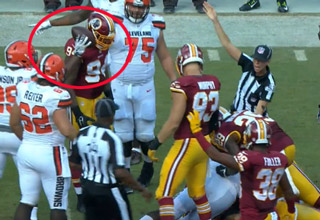
Let’s all pour one out for Vulcan, the planet brother we didn’t know we (almost) had.
Way back in the mid-1800s, French astronomer Urbain Le Verrier noticed that Mercury, to put it in scientific terms, “moved weird.” As this movement didn’t fit with the current understanding of the laws of motion laid out by famed forever-aloner Sir Isaac Newton, Le Verrier theorized that there was another, secret planet that was messing up Mercury’s orbit.
He gave this planet the absolutely metal name “Vulcan,” named after “the god of fire, since it must have a very hot surface temperature,” per Forbes.
Vulcan was a theorized planet that some pre-20th century astronomers thought existed in an orbit between Mercury and the Sun. Speculation about, and even purported observations of, intermercurial bodies or planets date back to the beginning of the 17th century.
— Science Is Fun (@sciencefunn) August 4, 2023
Image credit:… pic.twitter.com/6DSuNLzKJp
Star Trek jokes aside, Le Verrier was incorrect.
“Einstein himself realized that his own general theory of relativity could explain Mercury’s strange orbit not by proving the existence of Vulcan, but by calculating how the Sun’s mass curves space-time around it,” explains author Jamie Carter.
Apparently, stuff like this used to happen all the time. In 1848, French physicist Jacques Babinet theorized a planet “12 times as massive as Earth” that “orbit[ed] the Sun once every 336 years at a distance 48 times further than Earth's orbit.” He gave this planet an equally metal name: Hyperion.
Other false planets would come and go, too. For example, in 1911, Indian astronomer Venkatesh P. Ketakar theorized two planets he called Brahma and Vishnu. Of course, there’s also the discourse about Planet X — and the many times weirdos have claimed that this fictional planet is about to crash into the earth.
Unfortunately, it seems like most, if not all, of the planets in our solar system have been discovered. That said, I’m still holding out hope that astronomers will find a new celestial body somewhere out there — if just for the metal name they’re sure to give it.






0 Comments